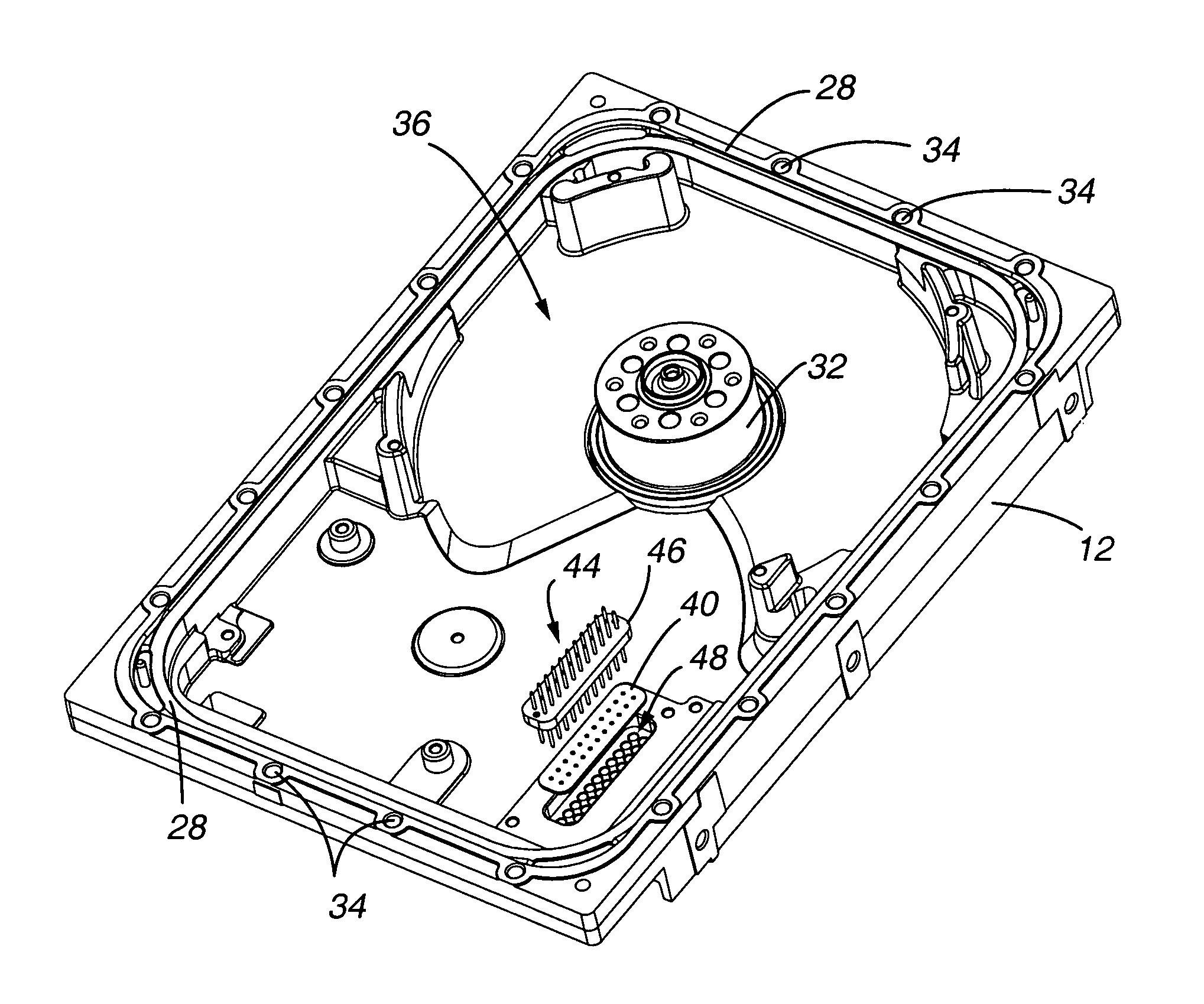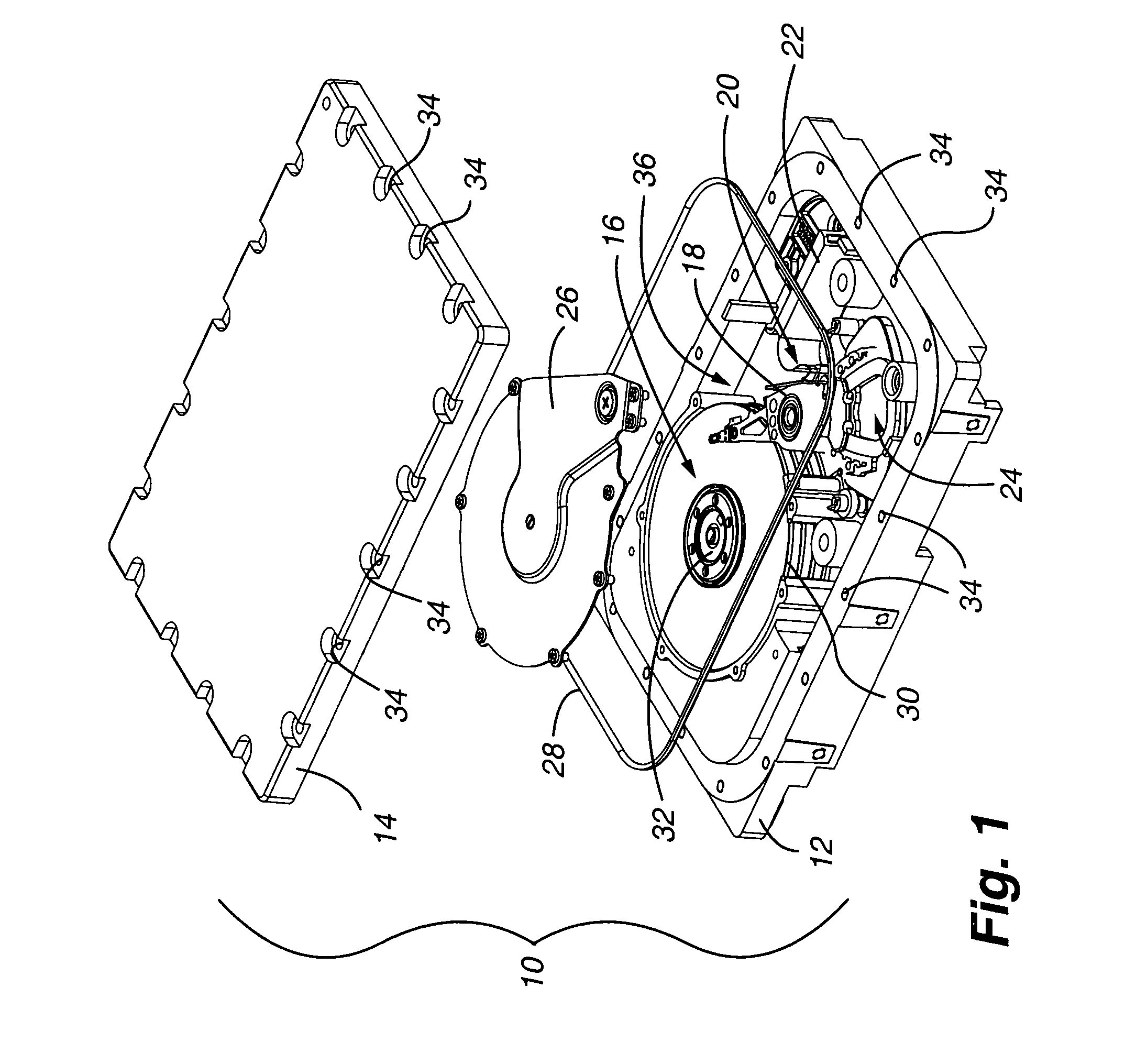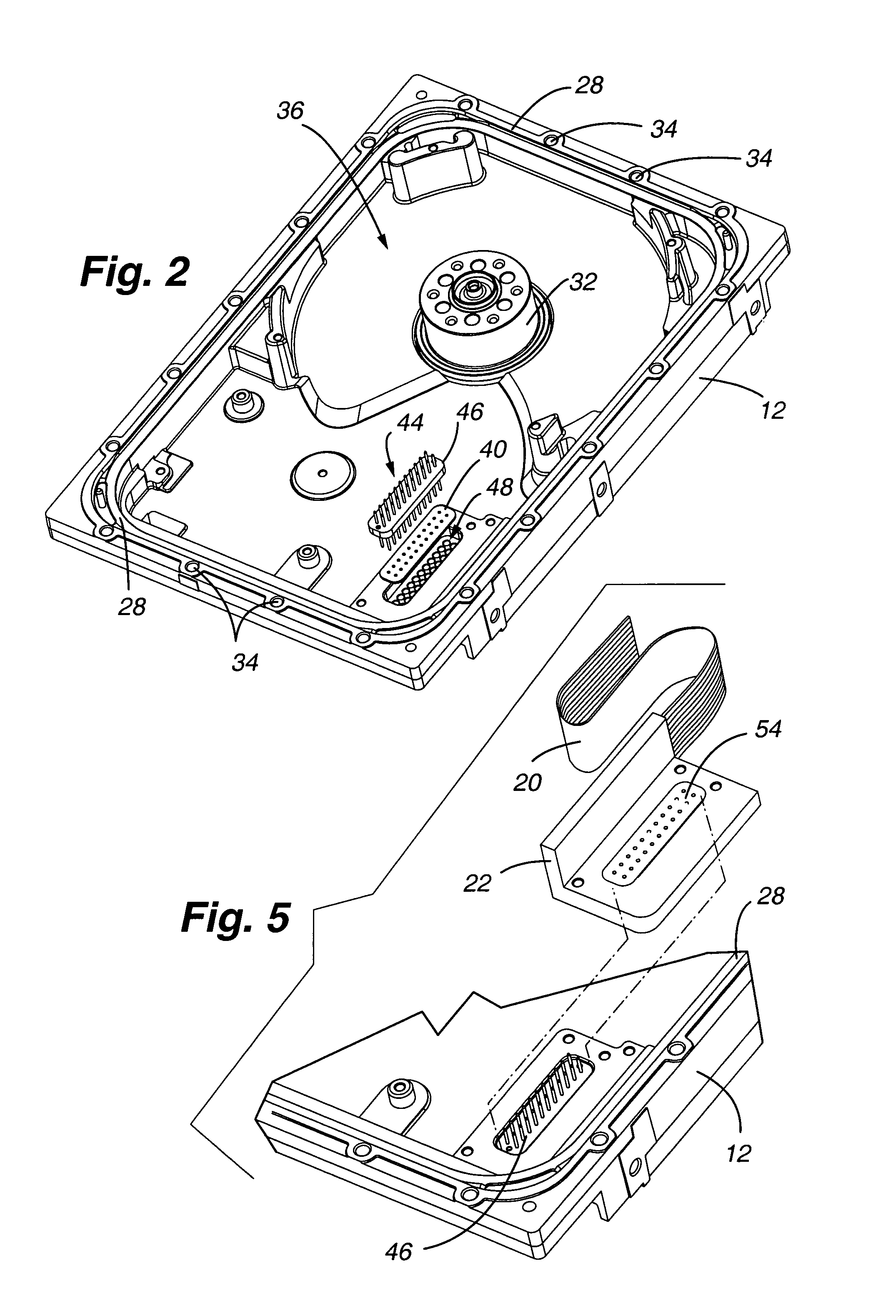However, decreasing the width of tracks makes it more difficult for the read / write heads to accurately read and write information to and from the narrowing tracks.
Not only is it difficult to physically position the read / write element over a narrow width track, but it is increasingly difficult to maintain the read / write element over the track at an optimal position for accurate data transfer.
Air turbulence created by the
spinning disks, disk
flutter and spindle vibrations, temperature and altitude can all adversely effect registration of the read / write element relative to the tracks.
Moreover, increasing the speed of the rotating disks to achieve increased
data access times increases air turbulence, which increases misregistration between the read / write element and the tracks on the storage disks (track misregistration or TMR).
Accuracy can be further adversely effected if the read / write heads are not maintained within an optimum height range above the surface of the storage disk.
However, since the disk rotates many thousands of
revolutions per minute or more, continuous direct contact between the slider and the recording medium can cause unacceptable wear on these components.
Excessive wear on the recording medium can result in the loss of data, among other things.
In non-contact disk drives there are also limitations on how close a read / write element may be to the surface of a disk.
These factors, as well as air turbulence, disk
flutter and spindle vibration, can cause the read / write element
flying height to vary or even cause the read / write element to contact the
spinning disk.
Such seals are not designed to prevent internal air and other gases from exiting through the seal and out of the drive.
Despite these advantages,
low density gas-filled drives have not been commercially successful.
It has been difficult to prevent the low density gas from escaping from the sealed drive environment.
Conventional rubber seals used in air-filled drives are inadequate at preventing leakage of low density gas due to the smaller atom size of low density gases, such as
helium, compared to air.
Thus, over time, the necessary threshold quantity of low density gas may be lost within the drive environment and may or may not be replaced with
ambient air.
As the low density gas leaks out of a drive and is replaced by air, the drive is subject to undesirable operational effects possibly leading to unacceptable error rates and / or failure of the drive.
For example, the increased concentration of air may increase the turbulent forces on the heads due to the increased drag forces within the drive which may further cause the heads to fly at too great a distance above the disks and potentially increasing instances of read / write errors.
If the low density gas leaks from the sealed environment over time and is not replaced by
ambient air, problems will occur such as the heads flying at a distance too close or in contact with the disks, thereby increasing instances of read / write errors as well as damage to the disk surface and head and higher operating temperatures due to a reduction in
conduction cooling.
Each creates a reliability risk.
The risk of unanticipated failures due to inadequate amounts of low density gas within the drive is a draw back to low density gas-filled drives.
Indeed, data stored within the drive may be irretrievably lost if the drive fails due to the loss of the low density gas environment.
Because manual labor is involved in each of these processes, these application methodologies are relatively costly.
Moreover, it is also difficult to maintain uniform consistency in the application, placement and quantity of the sealing
epoxy due to the use of manual labor and / or due to the need to continuously add component epoxies to mixing and dispensing machines and simultaneously maintain operation of the machines which tend to clog over time.
These techniques also require regular and frequent equipment cleanup and maintenance which is labor-intensive.
These methods are also inefficient in terms of material usage.
Not only does the quantity of
epoxy applied vary, possibly resulting in the waste of epoxy, but a large quantity of epoxy remains unused in the dispensing equipment, cannot be subsequently used and is discarded.
Another drawback of these techniques is
contamination of the electrical or input / output pins by the sealing epoxy.
In each
scenario, the epoxy-coated pins may no longer create a reliable
electrical connection between electrical components on opposite sides of the base plate.
In turn, this can cause electrical failures in the disk drive.
 Login to View More
Login to View More  Login to View More
Login to View More 


